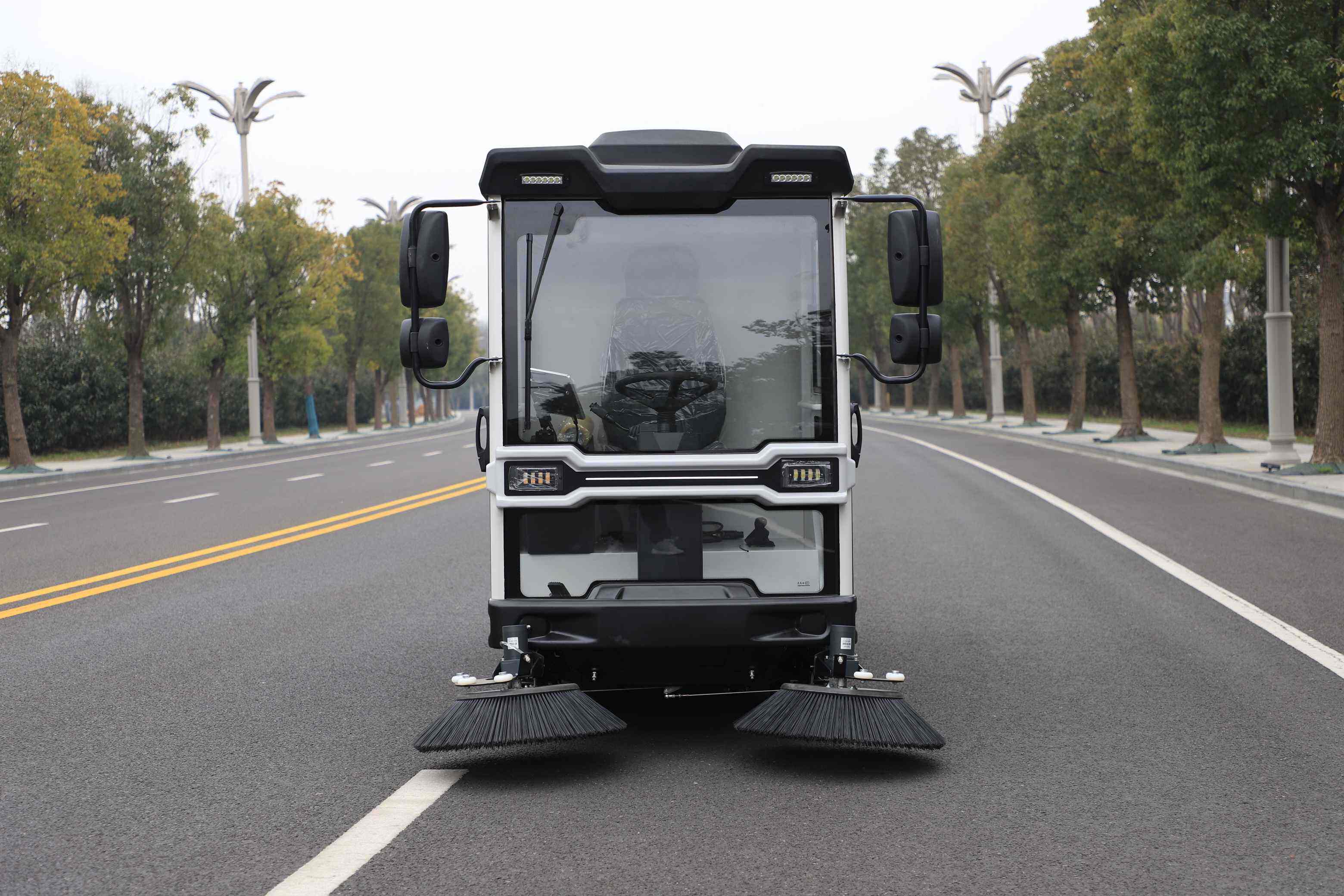How Street Sweepers Combat Urban Pollution
Types of Pollutants Removed by Street Sweepers
Street sweepers play an essential role in maintaining urban cleanliness by removing various solid pollutants that can accumulate on city streets. These pollutants typically include litter such as plastics and papers, organic materials like leaves and grass clippings, and street debris, which can harbor unsanitary conditions. Additionally, street sweepers help manage microplastics and rubber remnants from tire wear. The presence of these materials not only harms the urban environment but also adversely affects public health.
Moreover, street sweepers are effective at collecting heavy metals like lead, zinc, and copper, which emanate from vehicle emissions and the wear and tear of pavements. These metals, if left unchecked, can accumulate in urban environments, contributing to pollution and posing significant risks to both human health and ecosystems. Oils, fuels, and chemical spills are other common pollutants that street sweepers address. By eliminating them from street surfaces, these machines prevent such contaminants from seeping into local waterways, thereby protecting aquatic life and maintaining the quality of urban water bodies.
Mechanisms for Collecting Debris and Contaminants
The advanced design of modern street sweepers allows them to effectively collect debris and contaminants, ensuring comprehensive street cleaning. They employ sophisticated suction and broom systems, combining mechanical brushes with powerful vacuum technology to maximize the amount of collected debris. This technology is critical for thoroughly cleaning street surfaces, capturing particles, and preventing their re-dispersal into the environment.
Street sweepers come in various models, each tailored to different street types and the kinds of debris typically encountered. Municipalities must choose machines that align with their specific cleaning requirements to achieve optimal results. Additionally, the integration of water spray systems helps suppress dust during the sweeping process. Not only does this enhance the air quality by reducing airborne particulates, but it also ensures that fine debris remains-contained, reinforcing the efficacy of street cleaning efforts.
Impact on Reducing Harmful Chemical Runoff
Street sweepers greatly contribute to reducing harmful chemical runoff by removing contaminants from surfaces before they are washed away by rain. This proactive removal significantly benefits local water bodies by preventing pollutants from entering storm drains and reducing the risk of contamination. Studies indicate that municipalities employing street sweepers can reduce stormwater pollutant levels by up to 50%, showcasing their vital role in environmental stewardship.

Moreover, by preventing contaminants from clogging storm drains, street sweepers help mitigate the occurrence of harmful algal blooms. These blooms can devastate aquatic ecosystems and pose health risks to humans and wildlife. The use of street sweepers, therefore, not only supports environmental protection efforts but also enhances overall urban resilience against pollution. These operations are pivotal in the broader context of stormwater management, ensuring cleaner and healthier urban communities.
Protecting Waterways Through Efficient Debris Removal
Stormwater Pollution Prevention Strategies
Implementing regular street sweeping is a crucial component of effective stormwater pollution prevention strategies. It helps keep pollutants from entering stormwater systems, thereby protecting local water sources. Regularly sweeping streets ensures that litter, leaves, and other debris are collected before they can be washed away by rainfall, which helps maintain clean waterways. Furthermore, engaging the community by educating them about stormwater management and the role of street sweepers can enhance public participation in these cleanliness efforts. By integrating green infrastructure, such as rain gardens and permeable pavements, along with street sweeping, cities can improve the absorption of rainwater and the filtration of pollutants, thereby enhancing the effectiveness of these strategies.
Blocking Contaminant Flow to Storm Drains
Strategic deployment of street sweeping services is effective in blocking the flow of contaminants into storm drains, ensuring reduced pollutant introduction into stormwater systems. By maintaining a regular cleaning schedule, municipalities can significantly minimize the risks associated with stormwater overflow and flooding, which often carry untreated pollutants into local waterways. Regular street sweeping helps remove debris and contaminants that could obstruct storm drains and lead to backups. Collaborative efforts between street maintenance and stormwater management teams can strengthen the effectiveness of these strategies by aligning their operational objectives, thereby enhancing urban maintenance and environmental protection.
Ecosystem Preservation in Local Water Bodies
Street sweepers play a pivotal role in preserving local ecosystems by maintaining cleaner waterways, which supports healthy aquatic life and promotes biodiversity. Research has shown that decreasing sediment and pollutants in water bodies leads to healthier fish populations and improved water quality, which are vital for sustaining aquatic ecosystems. Additionally, a long-term commitment to regular street cleaning ensures that sustainable practices are in place to protect and restore habitats. By preventing harmful substances from entering water bodies, street sweepers help foster environments that allow ecosystems to thrive, thereby contributing to the overall health and stability of urban and suburban wildlife areas.
Improving Air Quality by Reducing Particulate Matter
Role of Street Sweepers in Dust Suppression
Street sweepers play a crucial role in enhancing air quality by effectively reducing dust and particulate matter from roads. By regularly cleaning streets, these machines help suppress visible dust, which otherwise could significantly impact urban air quality. Utilizing advanced technology, such as water spray systems, street sweepers not only lessen dust but also capture fine particles that contribute to pollution. Cities that have implemented robust street sweeping programs have seen a reduction in PM10 and PM2.5 levels, illustrating the effectiveness of these machines in mitigating airborne dust. This focus on air quality improvement is vital for creating healthier urban environments.
Health Benefits of Lowering Airborne Particles
Reducing airborne particulate matter through street sweeping brings substantial health benefits to the community. By diminishing the number of fine particles in the air, there is a notable decrease in respiratory issues among urban populations. Studies have indicated that cleaner air resulting from street sweeping correlates with fewer hospital visits and a decrease in healthcare expenses over time. Promoting public awareness of these health advantages can bolster community support for street maintenance programs, enhancing their sustainability and impact.
Long-Term Effects on Urban Respiratory Health
In the long run, consistent street sweeping can lead to lasting health improvements for urban residents. By maintaining cleaner streets, cities can experience lower incidences of asthma and other chronic respiratory diseases. Research supports that cities prioritizing street cleaning enjoy a marked reduction in air pollution-related health issues. Investing in street sweeping as part of urban public health strategies not only improves individual well-being but also fosters a more vibrant and resilient community, ultimately creating an environment where public health initiatives can thrive.
Supporting Public Health and Urban Aesthetics
Reducing Disease Vectors Through Regular Cleaning
Street sweeping is crucial in mitigating public health risks by reducing disease vectors. This is achieved by eliminating standing water and debris that serve as breeding grounds for mosquitoes and other pests responsible for vector-borne diseases. Communities prioritizing regular street cleaning initiatives often report a correlation with lower incidences of these diseases. Public health agencies strongly advocate systematic street cleaning as it enhances urban sanitation and boosts community health. This proactive approach ensures that our neighborhoods not only look clean but are safe and healthy for all residents.
Enhancing Community Pride with Cleaner Streets
Maintaining clean streets significantly boosts community pride, creating a positive atmosphere that encourages residents to engage more with their neighborhoods. Cleaner environments prompt individuals to participate in community events and communal activities more actively. Studies have shown that cities with consistent and well-maintained street cleaning programs often experience improved community relations and social cohesion. Furthermore, when community-led initiatives are aligned with municipal street sweeping efforts, they can amplify the positive impact on urban culture and foster a stronger sense of belonging among residents.
Correlation Between Cleanliness and Tourism Appeal
Urban cleanliness is a pivotal factor in enhancing a city's tourism appeal. Research highlights that travelers often prioritize the appearance and cleanliness of destinations when choosing where to visit. Cities investing in street sweeping and cleanliness initiatives typically see an increase in tourist visits, which, in turn, boosts the local economy. Promoting such cleanliness helps attract tourists and fosters an inviting atmosphere for businesses considering investment in vibrant communities. By prioritizing street maintenance, cities can create an appealing, welcoming environment that supports economic growth and community development.
Helping Municipalities Meet Environmental Regulations
Key Environmental Laws Governing Urban Cleanliness
Municipalities are required to comply with essential environmental regulations that mandate maintaining urban cleanliness to minimize pollution and protect public health. Regulations such as the Clean Water Act and various local ordinances are pivotal in structuring the implementation of street sweeping services. These laws ensure that cities prioritize keeping paved surfaces free from pollutants that could be carried into ecosystems, affecting water quality and soil health. Understanding and adhering to these regulations not only promote environmental well-being but also help municipalities allocate resources efficiently, ensuring they remain compliant and thus, avoid potential penalties or fees associated with non-compliance.
Cost Savings from Proactive Pollution Control
Investing in street sweeping services can lead to significant cost savings for municipalities by curbing pollution-related damages to infrastructure and public health. Proactive cleaning measures help mitigate the financial strain of emergency responses to events such as flooding and pollution incidents. By managing pollution effectively, municipalities will likely face lower maintenance costs for roadways and other infrastructure. The long-term financial benefits demonstrate a clear return on investment, as cleaner streets contribute to healthier environments and reduced incidence of costly repairs or public health crises, highlighting the fiscal prudence of regular street sweeping.
Street Sweepers as Tools for Regulatory Compliance
Street sweepers are indispensable tools that municipalities can leverage to ensure compliance with environmental regulations and standards. By maintaining a routine street sweeping schedule, cities can showcase their dedication to environmental stewardship and sustainable practices. This proactive approach not only cleans the streets but also contributes to municipal accountability. Proper documentation of street cleaning activities is essential, as it aids municipalities in maintaining transparency and providing evidence of compliance to regulatory bodies. Moreover, utilizing street sweepers consistently underscores the commitment to minimizing environmental impact, reinforcing a city’s role as a custodian of its urban landscape.
FAQ
How do street sweepers work?
Street sweepers typically use mechanical brushes combined with suction systems to remove debris from street surfaces. Some models also incorporate water spray systems to suppress dust and contain fine particles.
What types of pollutants do street sweepers remove?
Street sweepers remove various pollutants, including litter, organic materials, microplastics, rubber remnants, heavy metals, oils, fuels, and chemical spills.
How do street sweepers help in reducing pollution?
Street sweepers prevent pollutants from entering waterways and storm drains by removing them from city streets. This contributes to cleaner urban environments and supports public health initiatives.
Can street sweepers improve air quality?
Yes, street sweepers play a vital role in improving air quality by reducing dust and particulate matter from roads.
Are there environmental laws governing street sweeping?
Yes, various environmental laws, such as the Clean Water Act, mandate the implementation of street sweeping services to minimize pollution.
Do street sweepers contribute to cost savings?
Street sweepers can lead to significant cost savings by reducing pollution-related damages to infrastructure and public health.
 EN
EN
 AR
AR
 FR
FR
 HI
HI
 JA
JA
 KO
KO
 PT
PT
 RU
RU
 ES
ES
 IW
IW
 VI
VI
 TH
TH
 MS
MS

